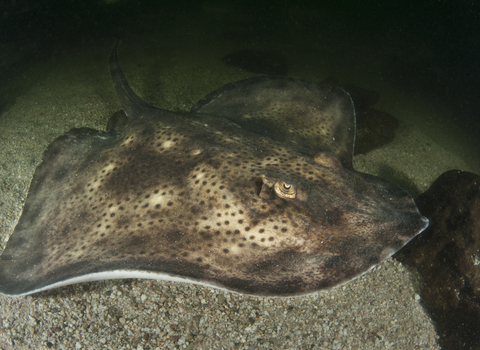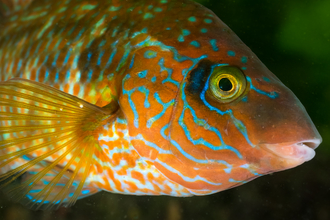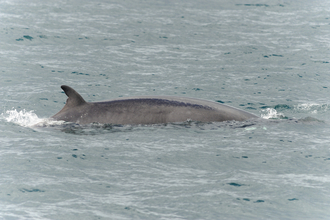
Blonde ray ©Peter Verhoog
Blonde ray
This large skate has tiny, prickly spines all over its back.
Scientific name
Raja brachyuraWhen to see
Between June and AugustSpecies information
Statistics
Length: Up to 120 cmWeight: Up to 14.3 kg
Average Lifespan: Can live for up to 15 years
Conservation status
The blonde ray is listed as Near Threatened by the IUCN Red List.
Habitats
About
The blonde ray is a large skate that lives close to the sea floor. It likes sandy areas where its ochre-coloured body is camouflaged against the seabed, hiding it from any predators.Because they are a relatively large skate they can feed on cuttlefish and sandeels, as well as a variety of small crustaceans and molluscs.
How to identify
The blonde ray is large and diamond shaped, with small dark spots all over its back that extend to the edge of its wings, as well as a scattering of larger pale spots.It could be confused with the spotted ray, but the spots on the back of the spotted ray don't extend to the very edge of the wings, as they do on the blonde ray.





